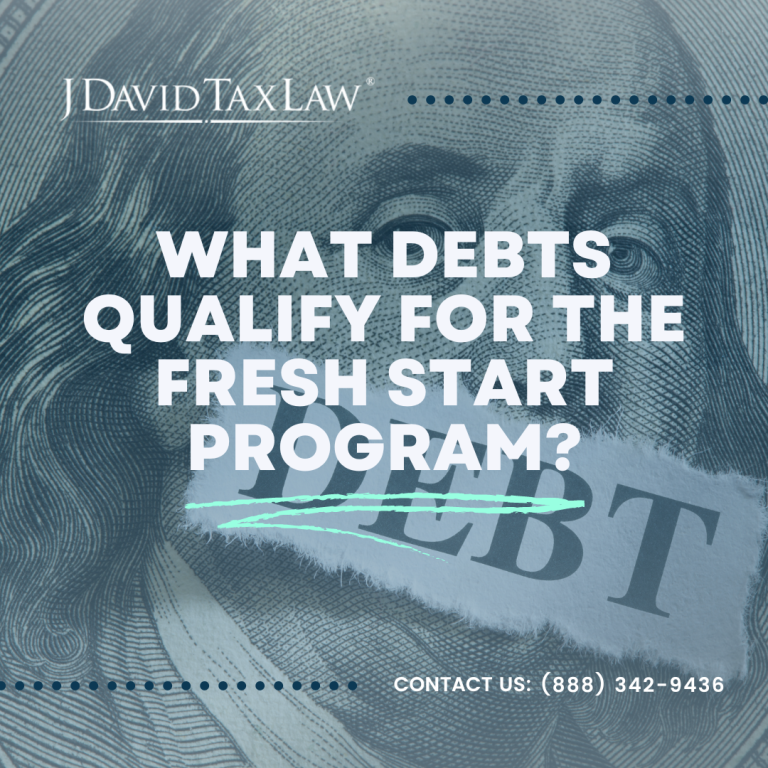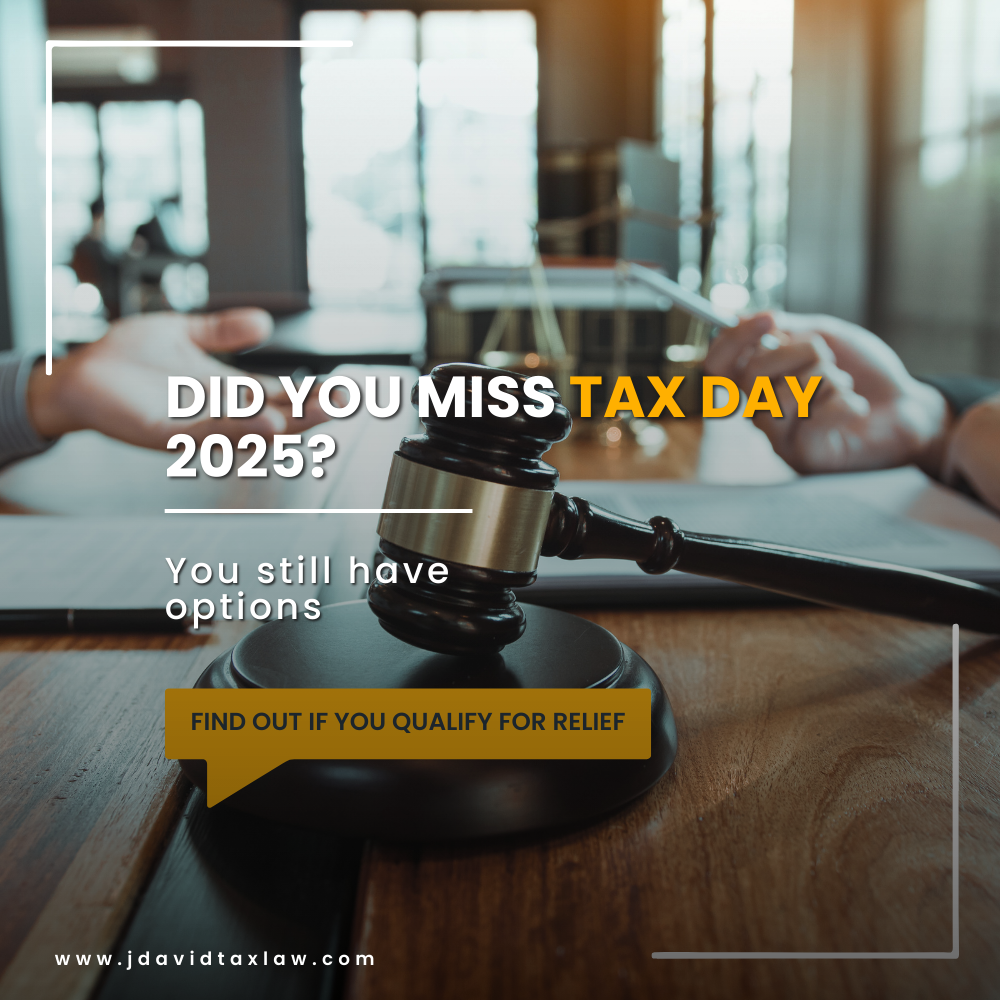
Yes, a tax attorney can negotiate with the IRS on your behalf,reducing penalties and resolving tax debt.Call our IRS tax relief attorney at (888) 342-9436.





Empowering yourself with the right information is the first step toward resolving tax debt. Taxpayers often find themselves confused about how to resolve their mounting tax debts with the Internal Revenue Service (IRS).
On these occasions, the IRS Fresh Start Program often offers a lifeline to those struggling to meet their tax obligations. This initiative aims to provide clarity and support by offering various options to reduce and eliminate tax debt.
Whether dealing with federal tax debts or penalties, understanding why this relief is crucial. Read on as we outline what debts qualify for the Fresh Start Program and the key steps to apply.
The Fresh Start Program is an initiative by the IRS designed for struggling taxpayers to get back on track with their tax obligations. Launched in 2011, the program aims to make it easier for individuals and small businesses to pay back taxes. In return, it avoids the severe penalties and interest that accompany unpaid taxes.
Simply put, it provides greater flexibility for those who are unable to pay their tax debts in full. The primary goals of the program are to:
ease taxpayer’s financial burden through more manageable payment options.
increase taxpayer compliance and reduce the number of individuals and businesses falling into tax debt.
restore trust between the IRS and taxpayers by demonstrating a willingness to work.
Federal tax debts cover unpaid income taxes that individuals or businesses owe to the IRS. These debts often accumulate due to unpaid taxes, errors in tax filing, or unexpected financial hardships.
The program is geared towards helping taxpayers manage these kinds of debts. This is usually through options like Installment Agreements and Offers in Compromise.
Criteria for Eligibility:
Taxpayers must file all required federal tax returns.
Taxpayers must make estimated tax payments for the current year, if applicable.
Businesses with employees must make federal tax deposits for the current quarter.
Examples of Qualifying Tax Debts:
Unpaid income taxes
Unpaid self-employment taxes
Back taxes from previous years
Penalties for unpaid taxes can quickly add up and increase the total amount owed. These include failure-to-file and failure-to-pay penalties. While it is aimed to encourage timely tax filing and payment, it can become a major financial burden if left unaddressed.
The Fresh Start Program offers the possibility of reducing or eliminating these penalties. Thus, making it easier for taxpayers to settle their debts.
Eligibility Criteria for Penalty Relief:
First-time penalty abatement: Available for taxpayers who have a clean compliance history.
Reasonable cause: Situations like natural disasters, medical emergencies, or other unforeseen circumstances.
A tax lien is a legal claim against a taxpayer’s property when they fail to pay a tax debt. This can severely affect the taxpayer’s credit history score and ability to obtain financing.
Under the Fresh Start Program, taxpayers can request a lien withdrawal if they meet certain conditions. This includes entering into a direct debit installment agreement or paying the debt in full.
Eligibility Criteria for Lien Relief:
The tax debt must be below a certain threshold.
The taxpayer must comply with all filing and payment requirements.
The taxpayer must enter into a direct debit installment agreement.
A tax levy is the legal seizure of a taxpayer’s property to satisfy a tax debt. This can include wage garnishment, seizing bank accounts, or taking other assets. The impact of a tax levy often leaves taxpayers in a difficult financial situation as essential funds and assets are taken to satisfy the debt.
Eligibility Criteria for Levy Relief:
The taxpayer must enter into an installment agreement or Offer in Compromise.
The taxpayer must demonstrate financial hardship that prevents them from meeting basic living expenses.
Payroll tax debts arise when businesses fail to pay employment taxes withheld from employees’ wages. This includes federal income tax, Social Security, and Medicare taxes.
Eligibility Criteria for Payroll Debt Relief:
Businesses must file all required payroll tax returns.
Businesses must make federal tax deposits for the current quarter.
Businesses must demonstrate an inability to pay due to financial hardship.
Examples of Qualifying Payroll Tax Debts:
Unpaid federal income tax withholdings
Unpaid Social Security and Medicare taxes
Unpaid unemployment taxes
Before starting the Fresh Start Program application, gather all the necessary financial documents such as:
Recent tax returns
Proof of income (pay stubs, W-2 forms, 1099 forms)
Bank statements
Monthly expense records (rent or mortgage, utilities, groceries, medical expenses)
Documentation of assets and liabilities
Decide which form of relief best suits your situation:
Installment Agreement: Ideal for those who can pay their tax debt over time.
Offer in Compromise: Suitable for those who cannot pay the full amount and meet the criteria for financial hardship.
Penalty Abatement: For those seeking relief from penalties due to reasonable cause or first-time abatement.
Lien Withdrawal: For those who can enter a direct debit installment agreement or have paid the debt in full.
Levy Release: For those who can demonstrate financial hardship or have entered into an installment agreement or Offer in Compromise.
Review the eligibility criteria for the specific type of relief you are seeking under the Fresh Start Program. Look into your financial situation and understand the specific criteria for each type of relief under the program.
For example, if you are considering an Installment Agreement, the IRS typically offers streamlined agreements for debts up to $50,000. Debts exceeding this amount may need to provide more detailed financial information.
In addition, you should assess your ability to make regular monthly payments. The IRS will examine your income, expenses, and capacity to pay within six years. This ensures you meet the requirements and avoid default agreements.
Fill out the necessary IRS forms based on the relief option you have chosen:
Use Form 9465 (Installment Agreement Request).
Use Form 656 (Offer in Compromise) and Form 433-A (OIC) or Form 433-B (OIC) for individuals or businesses, respectively.
Request penalty relief through Form 843 (Claim for Refund and Request for Abatement).
Submit Form 12277 (Application for Withdrawal of Filed Form 668(Y), Notice of Federal Tax Lien).
Request levy release through direct communication with the IRS, often supported by Form 433-F (Collection Information Statement).
Submit the completed forms and supporting documentation to the IRS. Make sure all forms are filled out accurately and completely, especially when asking for Fresh Start Program status. Attach copies of the financial documents to support your application and mail the forms to the appropriate IRS address.
Timely and accurate submission will help expedite the review process and increase the chances of approval.
If your application is approved, it is crucial to make timely payments according to the terms and continue to file all required tax returns. Compliance with these terms is essential to avoid defaulting on your agreement. This could result in reinstatement of penalties or levies.
The IRS Fresh Start Program offers a valuable opportunity for taxpayers to manage and resolve their tax debts more effectively. By understanding the types of debt eligibility criteria and the application process, you can take proactive steps toward financial stability.
Here at J. David Tax Law, we specialize in helping clients understand and navigate the Fresh Start Program to find the best solutions for their unique financial situations. Our experienced tax professionals are dedicated to ensuring you receive the relief you need to regain control of your finances.
If you think you might qualify for the Fresh Start Program, don’t wait to seek help. Visit our website for more information, or call us at (888) 342-9436 to schedule a free tax debt consultation.
Our tax relief attorneys specialize in tax problems and tax debt resolutions
Get started with a 100% free consultation

Yes, a tax attorney can negotiate with the IRS on your behalf,reducing penalties and resolving tax debt.Call our IRS tax relief attorney at (888) 342-9436.

Missed the April 15 Tax Day 2025 deadline? Learn about IRS penalties, late payment relief, and how to settle your tax debt. Call us at (888) 342-9436.

IRS grants a tax deadline extension to California wildfire victims.Can you delay filing and payment until Oct. 15, 2025?Call at (888) 342-9436 to find out.
Get IRS Tax Assistance Within 24 Hours